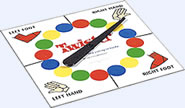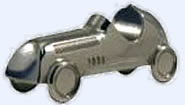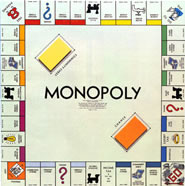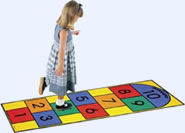Toys and games – Unit plan


Overview
Years 1-2
Teacher: Tash Martin
Class grouping: Whole class teaching, individual and small groups for teacher focus.
Duration: 1 week
Contexts: Personal, Home, School, Community.
Curriculum Focus
- Technology
- Areas of Learning: Creative design, Materials
Integrated Curriculum (Not assessed)
- Literacy: Oral language – express ideas, Written language
- Numeracy: Children carried on with number knowledge and all groups had toy/game problem solving worksheets.
- Health and physical education: Interpersonal skills – express ideas, and feelings, and listen to others.
- Social Sciences: Continuity and change: Understand the past, present, and possible futures.
- Arts:
- Understanding – sharing how works are made and their purpose.
- Developing visual ideas.
- Communicating their work and describing ideas.
Curriculum links
| Values (As per school curriculum)
P artnership | Key competencies:
|
Key knowledge / Language
- Technology is about people developing outcomes to meet needs.
- New and Old, what is different? what is the same?
- Producing for a target market – what is a target market?
ICT
- Use of digital camera, data projector to enhance learning.
- Use of telephone, fax and internet for research.
Learning outcomes and success criteria
|
Technological Practice – Level 1 |
|||
| Achievement objectives | Learning outcomes Students will be able to: | What students will do... | Assessment strategies |
| Brief development | Describe the type of toy they are developing and why Identify attributes toy would need to have | Developing conceptual designs for new toys based on ideas from current toys and discussions about materials and their properties. | 1-1 discussions about what they are doing and why. Student mat time discussions e.g. of how particular toys or games have changed, what is its purpose/target market etc |
| Outcome development and evaluation | Select an outcome for further development Evaluate ideas | Make a card 'cube' which has detailed sketch of a toy on one face, and its attributes described on other 5 faces. | Student reflections on exemplars of others excellent work. Student written and visual description of their toy as captured in their cube. |
|
Nature of Technology – Level 1 |
|||
| Achievement objectives | Learning outcomes Students will be able to: | What students will do... | Assessment strategies |
| Characteristics of Technological Outcomes | Describe successes and improvements of current toys and games e.g twister now comes in carry bag, not just box, Monopoly game can be brought with different characters, also a card version, and an electronic version | Describe examples of toys and games and how they have changed over time. | Student peer assessment and evaluation of processes and final outcome. Simple positive statements, I like ... |
| Technological Knowledge – Level 1 | ||
| Achievement objectives | Learning outcomes Students will be able to: | What students will do... |
| Technological products | Explain the materials a particular toy or game is made from and identify what properties these materials have (strength, durability etc) | Identify what toys and games are made from Explain what properties a material has and why it was used to make a particular toy or game. |
Lesson outline
Learning experiences

(Not necessarily teaching sequence as many of these experiences were revisited over time and/or were linked with other subjects)
- Prior to unit – Letter home to parents outlining week
- Oral language Bring favourite toy or game from home. End of week, bring toy or game of Mum, Dad or even grandparents. Focus on information: Who from, Where from, What it is, How it works, When they got it etc.
- Explain they will have the opportunity to design their own toy and discuss the use of a cube to present their design ideas.
- Start an A-Z chart that can be added to each day.
- Large class venn diagrams – Old toys, new toys, and both were discussed and added to at mat time. The toys and games were discussed in terms of the "target market". This included talking mainly about age group although interests were also explored.
- Large class venn diagram for materials that their toys and games were made from. In some cases provide materials to extend students knowledge and allow them the opportunity to decide where they should fit on the chart.
- Introduce the cube making technique and allow students opportunity to practice making accurate cubes.
- During writing time students used their favourite toy they had discussed for oral language to write facts about it, ensuring this included identification of attributes. Children then drew their favourite toy.
- Children began drawing ideas for what a new toy might look like.
- Opportunity was provided for children to learn some drawing techniques so they could begin to draw more accurate and detailed pictures. Some children were able to label the functions of different parts of the toy.
- Ongoing discussions about old/new/ the same, the types of materials they were made from, and what their purpose was e.g. educate, entertain.
- Children began evaluating their own and others design ideas for a new toy.
- The class was divided into two groups of children. One group designed a new toy from scratch (these students needed to be very creative thinking children – had about 7 in class of 26). The larger part of the class chose a toy (about half chose their favourite toy) to "Make cooler", (their words).
- Children selected a design idea in keeping with their group and began developing a concept sketch of a prototype of it. This led to a cardboard cube presentation of their "new toy" – with a detailed sketch on one face and information about attributes on the remaining five sides of the cube.
 Resources:
Resources:

- Old and new toys
- Newsletter to parents outlining focus and where they can help
- A-Z chart with pictures sourced from internet
- 2 large class sheets of paper for venn diagrams
- Example of cube
- Writing example for children to highlight who, what, where, when and how features
- Cube template (glue gun and fishing twine/string to put together)
Future possibilities:
Making models of the toy from resources in class e.g. cardboard, plastic, boxes, etc. would allow students to test some of the design features suggested in their concept sketches.
